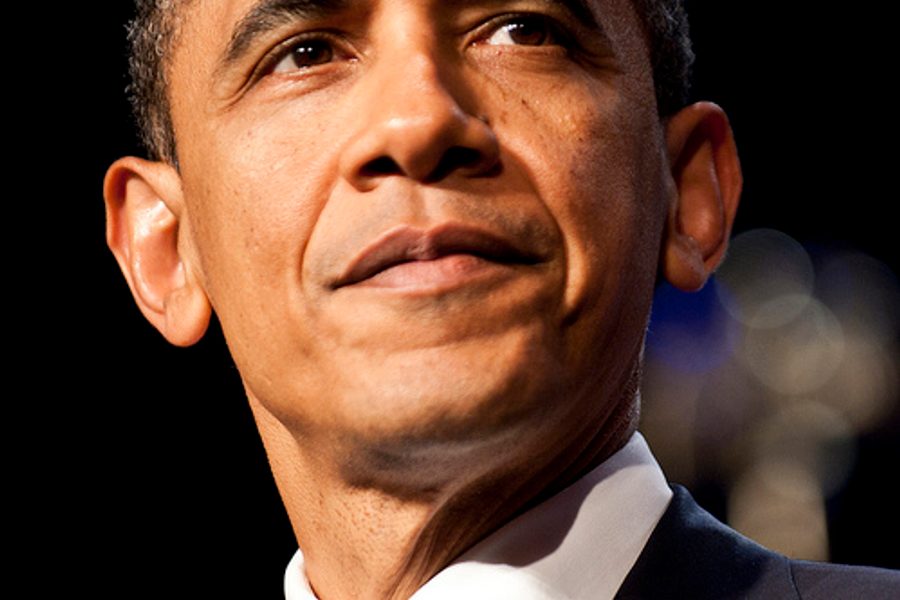Running on Empty
The United States’ real problem with oil and energy policy goes beyond rising prices
David Moberg

With gas prices pushing $3 a gallon, drivers aren’t just digging deep into their pockets. They’re getting angry – not just with oil companies and President Bush – and they think Democrats can do better. Yet converting those sentiments into electoral victories, let alone effective legislation, may not be so easy.
According to several polls taken in late spring, Americans rank gasoline prices slightly ahead of the Iraq war as a major issue, believe Bush has no clear plan for lower prices, and regard Republicans as far more influenced by big oil companies than Democrats. They think government can – and should – do something about the price at the pump.
People are right to be angry at oil companies, particularly when an ExxonMobil CEO retires with a $400 million compensation package. According to Public Citizen, a growing concentration of ownership, especially of U.S. refineries, has increased the spread between oil costs and gasoline prices. But such anti-competitive practices play only a small role in the recent increases.
Politicians can score some points by making price-gouging a federal crime, as Sen. Maria Cantwell (D-Wash.) has proposed. More importantly, they could eliminate the billions of dollars in tax subsidies Bush’s 2005 energy bill granted to oil companies. And, as Sen. Hillary Clinton (D-N.Y.) proposed in her high-profile energy policy speech in May, Congress could require oil companies either to pay some of their soaring profits into a strategic energy fund or invest the same amount in renewable, alternative energy sources.
Short-term sops, like $100 rebates or gas tax relief for consumers, solve little (though raising the minimum wage would help the hard-hit poor). But they do highlight a political dilemma for Democrats: Gasoline in the United States is already priced too low to reflect the full social cost of America’s oil addiction. Steadily rising taxes on gasoline over the past two decades could have been used to fund efficient transportation alternatives and push U.S. automakers away from their gas-guzzler strategy, which is now blowing up in their faces.
Axing the Inefficient
Especially with prices already high, politicians won’t raise gasoline taxes to finance new research and improved mass transit as Lester Brown, founder and president of the environmentalist Earth Policy Institute, has proposed. Besides, as Amory Lovins at the non-profit Rocky Mountain Institute (RMI), an energy research and advocacy enterprise, argues, higher gasoline prices are not the best way to move consumers to buy more fuel-efficient cars.
Lovins says that consumers are more likely to buy efficient cars if the price of the car they buy reflects its efficiency. He proposes “feebates,” which would impose a tax – or fee – on inefficient vehicles that would finance rebates for fuel-efficient vehicles. Low-income car owners would also be paid to junk old gas-guzzlers and buy newer, more efficient cars. Rather than blindly rely on the market he extols, Lovins’ strategy looks at where the market is failing to work and uses public policy to overcome barriers and bottlenecks.
Democrats face a political dilemma in dealing with gas prices. If they promise much lower gas prices, they will be both politically dishonest and promote bad policy. But they can realistically promise that Americans can travel where they want for less money and less environmental damage – if the country pursues more efficient energy technologies and alternative energy supplies.
Other countries – including China – already set higher standards for vehicle fuel efficiency. Europe and Japan expect automakers to produce cars that average between 39 to 44 miles per gallon within the next few years. Although the Department of Transportation recently decided that light trucks and SUVs must operate with an average of 24 miles per gallon by 2011, the standard for cars remains stuck at 27.5 miles per gallon. RMI concludes that carmakers could use ultralight materials and new technologies to make a full-size, attractively-priced SUV that gets nearly 80 miles to the gallon. Since 1975, the United States doubled the work each barrel of oil can do, according to RMI, and it can double the work from each barrel in the next 20 years with investments in efficiency that are already very cost-competitive.
Alternatives beyond efficiency
Even an oil man like Bush gives lip service to efficiency, while proposing to weaken auto efficiency regulations and cutting funding for efficiency research. But Democrats haven’t launched a crusade for “doing more with less,” in Sen. Clinton’s words. The Democratic alternative to Bush’s energy plan, introduced in May by Senate Minority Leader Harry Reid, proposed no new efficiency standards for vehicles.
Instead, Democrats are ardently promoting alternative fuels, especially biodiesels and ethanol (or ethanol-based E-85 fuels) from corn or a broad range of cellulosic crops and wastes. And many politicians are proposing ways to increase the number of gas stations that carry E-85 “flex fuel.”
With technology progressing and oil prices rising, the economic case for such biofuels has grown stronger. But biofuels can’t replace all of the oil the country now consumes, because that would require more farmland than exists in the United States. So biofuels can only become a serious alternative to oil if transportation becomes dramatically more efficient.
The United States needs to reduce, even eliminate, the need for all oil as a fuel, not just foreign oil. As long as the U.S. economy depends on oil, it will be subject to the prices set by a world market vulnerable to disruptions. Since the ’70s, the United States has proclaimed a goal of energy independence. Implicitly this addresses the Middle East, even though the country gets only 10 percent of its oil from the region. But politicians pay less attention to becoming independent of big energy companies and vulnerable, centralized technologies, from oil pipelines to nuclear power plants.
The role of labor
Republicans oppose Corporate Average Fuel Efficiency (CAFE) standards, the longstanding federal vehicle efficiency standards, because they oppose regulations and want to serve the short-term interests of the oil and auto industries. But many Democrats are also reluctant to buck both manufacturers and the United Auto Workers. They worry that the Big Three auto companies in particular will lose market share and jobs, since they have relied on inefficient models for their profits. Such manufacturers may simply import more fuel-efficient cars in order to meet a higher CAFE standard.
An alternative strategy, which has backing in principle from the United Auto Workers, would provide U.S. automakers with incentives for domestic production of new, more efficient vehicles. Despite the appeal of hydrogen fuel cells, electric vehicles or even diesels, the main transition engines will likely be hybrids that combine gasoline and electric engines (or plug-in hybrids that can also recharge batteries from the main power grid while parked). They’re already available and can more easily use existing gas stations to deliver fuel.
In one leading proposal for transition financing, introduced by Sen. Barack Obama (D-Ill.) and Rep. Jay Inslee (D-Wash.), auto companies that volunteered to invest in new hybrids and other fuel-efficient technologies would have a portion of their health care costs for retirees (roughly $1,500 per car for General Motors) paid for. Arguably, health care costs should be a social responsibility for these companies anyway, and those costs might be shifted to the public if the companies go bankrupt.
It’s an appealing deal, but it may not offer enough relief to ease the health care crunch or to help finance a rapid transition to new vehicles that would pay off in jobs and energy savings. Policymakers looking for a bigger change could still combine the swap with higher CAFE standards, feebates and other types of loans, loan guarantees or direct public investment.
This financing could speed production not only of hybrid engines but also new ultra-light, super-strong carbon fiber or light steel auto bodies that could save as much energy as the new engines. Without public investment and accountability, the transition will yield fewer benefits to society and more harm to autoworkers.
So Democrats could promise that they will help create a new domestic auto industry that can deliver better, safer, more efficient vehicles that cost less to operate, rely more on home-grown sources of energy, minimize harm to the environment and create good jobs. The Apollo Alliance – a coalition of unions, environmental groups, social justice advocates and businesses – has long advocated such an inspirational project. Now the Democrats simply need the courage to assert that government can and should take on the task for the common good.
David Moberg, a former senior editor of In These Times, was on staff with the magazine from when it began publishing in 1976 until his passing in July 2022. Before joining In These Times, he completed his work for a Ph.D. in anthropology at the University of Chicago and worked for Newsweek. He received fellowships from the John D. and Catherine T. MacArthur Foundation and the Nation Institute for research on the new global economy.









